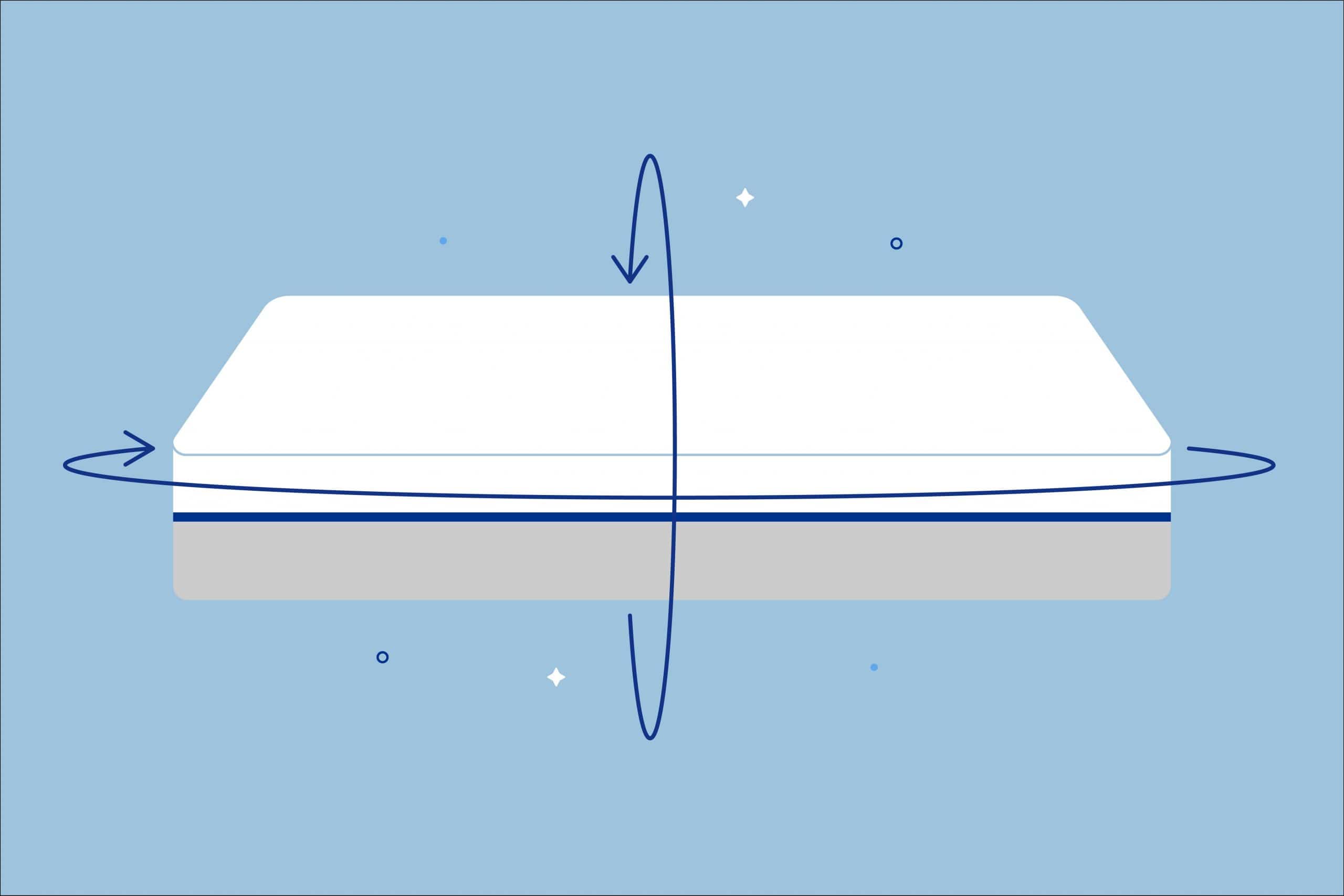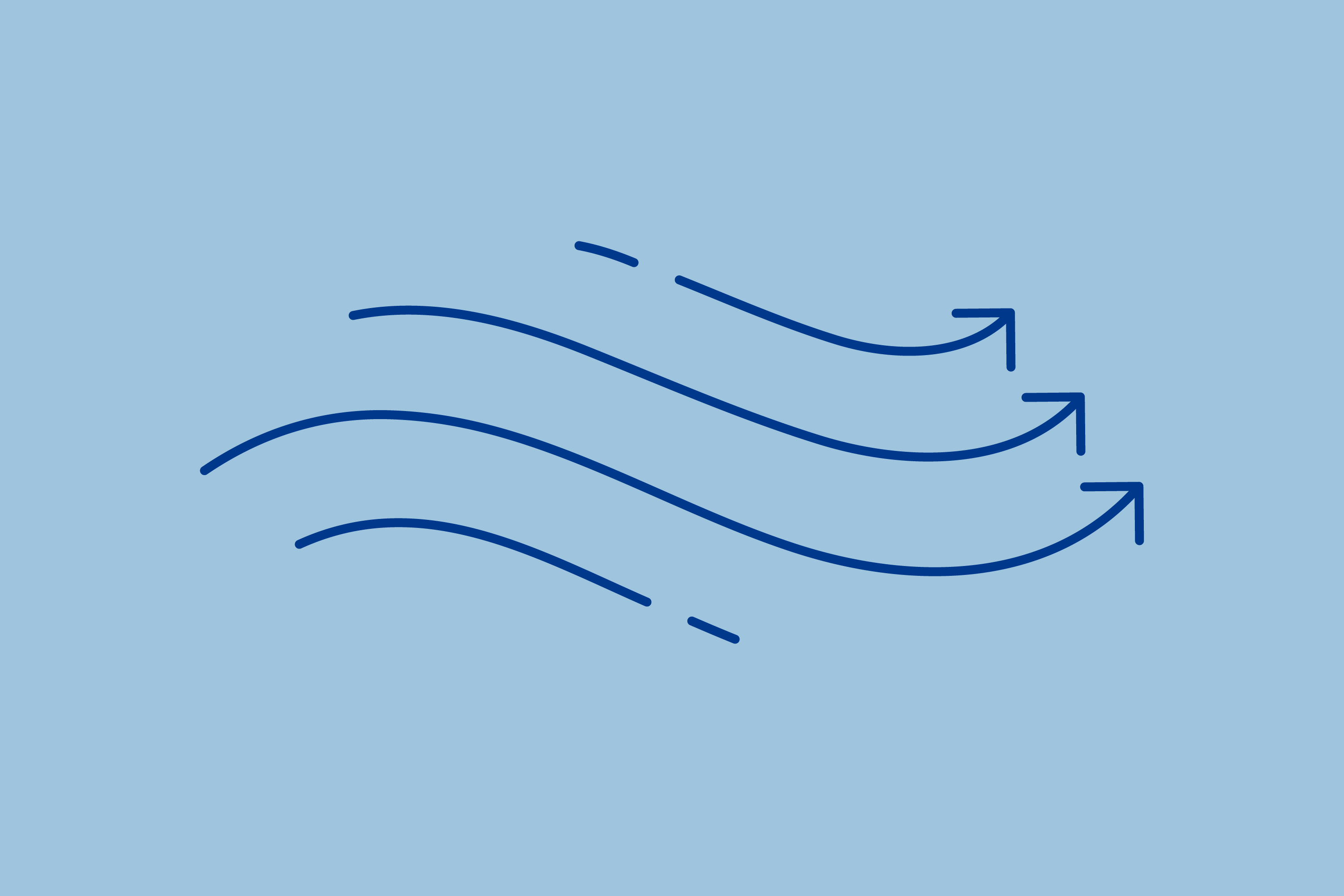Key Takeaways
- Why You Should Flip or Rotate: Flipping or rotating a mattress helps distribute weight evenly, preventing indentations and extending its lifespan. This practice is particularly important for double-sided innerspring mattresses to prevent premature coil wear.
- How Often and How to Flip/Rotate: The frequency of flipping or rotating depends on the mattress type, but a general guideline is every three to six months. Proper steps should be followed, including removing furniture, vacuuming, and ensuring the mattress is aligned correctly.
- Mattress Types Not to Flip: Memory foam, latex, hybrid, and one-sided pillow top or Euro top mattresses should not be flipped. Flipping them can lead to discomfort, damage, or loss of benefits from specialized comfort layers. Always check with the manufacturer for specific instructions.
When you buy a new mattress, following the best maintenance practices can ensure your mattress lasts a long time. Washing bedding weekly, vacuuming your mattress once every three months, and using a mattress protector are general rules to maintain your new bed. Similarly, mattress flipping or rotating can extend the life of your mattress. But you can’t flip or rotate all mattress models.
If your mattress is flippable, how often should you flip it? If it’s not dual-sided, how often should you rotate it? In this article, we discuss the difference between flipping and rotating, why should you flip or rotate, and how to do so.
The Difference Between Flipping and Rotating a Mattress
Both flipping and rotating evens out mattress wear. You enjoy a good night’s sleep for a longer period of time. But mattresses are built differently and have different maintenance needs. Not all models need to be flipped or rotated. In fact, flipping can damage some of them. Some mattress manufacturers void warranties if you flip one-sided mattresses.
- Flipping: Flipping your mattress means turning it over so you can use the other side. Flipping allows you to sleep on both sides of the mattress.
- Rotating: Rotating your mattress means turning it 180 degrees. The part where your head rests will now support your feet and vice versa.
Flipping a Mattress
Modern-day beds include specific layers customized with a purpose. While the top layers provide cushioning, the firm base layers enhance durability. If you flip these mattresses, the layers can’t serve their purpose. It causes discomfort and damages your mattress. Double-sided mattresses can be flipped and rotated too. Some double-sided mattresses include varying firmness levels on both sides. Flipping them gives you the option to choose between two firmness levels.
Why Should You Flip Your Mattress?
Sleeping on the same surface for a long time means your body eventually leaves a big imprint. Flipping the mattress or even rotating it can prevent these indents as you distribute weight across the bed.
But now this principle works only on double-sided innerspring mattresses. Flipping prevents the steel coils from wearing out prematurely, causing sag.
How Often Should You Flip Your Mattress?
The rule of thumb is to flip your mattress once every six months. Usually, mattresses come with labels, including care instructions. Otherwise, these details are also mentioned in the mattress’s warranty booklet.
How Should You Flip Your Mattress?
Since flippable mattresses can usually be rotated as well, it’s better to flip and rotate your mattress at the same time. Follow the steps below to flip and rotate your mattress without damaging it.
- Remove adjacent furniture, such as nightstands and floor lamps.
- Remove accessories such as pillows, mattress toppers, pads, and protectors.
- Rotate the mattress 90 degrees clockwise, so the longer side is parallel to the headboard.
- Raise and prop the mattress on its side.
- Vacuum your mattress, bed base, and unreachable areas beneath your bed.
- Gently flip the mattress.
- Lower it gradually so the face-up side now rests against the bed base.
- Rotate 90 degrees clockwise again to align the mattress with the bed base so the head is now at the feet and vice-versa.
How to Flip a Mattress by Yourself
Flipping a mattress by yourself can be challenging, especially if the mattress is large or heavy. However, with the right technique and some precautionary measures, you can safely flip your mattress without assistance. Here are some steps to help you flip a mattress by yourself:
- Clear the area: Remove any objects or obstacles around the mattress to create a clear and safe workspace. Make sure there’s enough space for you to maneuver the mattress without any obstructions.
- Protect the mattress: Place a soft and clean sheet or blanket on the floor to protect the mattress from any potential damage or dirt as you flip it over.
- Use the right technique: Stand at one side of the mattress and lift one corner while keeping the opposite corner firmly on the bed frame or the floor. Then, gradually pull the lifted corner towards you, allowing the mattress to rotate and flip over onto the protected area.
- Secure the flipped position: Once the mattress is flipped over, ensure that it is stable and properly positioned on the protective surface. Adjust the sheet or blanket if necessary to prevent the mattress from coming into direct contact with the floor.
If you find it challenging to flip the mattress alone or if the mattress is too heavy, consider using a mattress topper or rotating the mattress 180 degrees instead of flipping it completely.
Always prioritize your safety and well-being when attempting to move or manipulate heavy objects. If you are unsure about your ability to flip the mattress by yourself, consider asking for assistance from a family member, friend, or neighbor to ensure a safer and more manageable process.
What Mattress Types Should Not Be Flipped?
You shouldn’t flip any mattress unless it’s specifically marketed as a double-sided mattress. Most memory foam, latex, hybrid, and pillow top or Euro top mattresses are one-sided. Flipping one-sided mattresses leads to excess pressure on the comfort layer, causing irreversible damage to the mattress.
Flipping memory foam beds that aren’t meant to be flipped can cause discomfort. Memory foam mattresses contain memory foam in the top comfort layer and poly-foam in the support layers. If you flip them, you’ll sleep on the poly-foam core layer. The core layer’s purpose is to support the memory foam layer, and so it’s quite firm. The softer layers becoming the core will lead to fast deterioration and pain.
Some memory foam beds also include sleep technologies in the comfort layer, such as gel, copper, or graphite infusions. These sleep technologies have a cooling effect. If the comfort layer isn’t facing up, you can’t reap the benefits of these sleep technologies.
Hybrid mattresses contain at least 2 inches of comfort layer and a coil layer at the base. These beds combine features of innerspring and memory foam or latex beds. Hybrids are heavy mattresses because they include more materials. Flipping them will create excess pressure on the comfort layer and damage it.
Some latex mattresses can be flipped. But you don’t need to flip them because they take several years to show signs of wear. Before flipping your new bed check with the mattress company to ensure flipping won’t damage it, because not all latex mattresses can be flipped.
If you flip a pillow top mattress you can’t take advantage of the extra layer of padding on the comfort layer. Many innerspring mattresses have a pillow top layer for extra cushioning, as the surface of a traditional innerspring bed can provide relatively little pressure relief.

Rotating a Mattress
Most mattresses can be rotated unless mattress manufacturers specify otherwise. While flipping modern-day mattresses cause damage, rotating them still prolongs mattress life. Rotating a mattress is easier than flipping it.
Why Should You Rotate Your Mattress?
Overuse of certain areas sags your mattress. Sleeping on a sagging mattress disturbs the neutral alignment of your spine. Spinal misalignment triggers back pain, neck aches, and muscle stiffness. Rotating your mattress allows one area to recover from regular use, as another area gets used. It prevents mattress wear, extending durability.
How Often Should You Rotate Your Mattress?
The rotation frequency depends on the materials used in your mattress. Different manufacturers recommend how often each mattress type should be rotated. Usually, innerspring and memory foam mattresses should be rotated every three months. Hybrids should be rotated every three to six months, and latex mattresses every six months.
How Should You Rotate Your Mattress?
Once you know how frequently you have to rotate your new bed, it’s best to set a reminder on your phone or calendar. Follow these steps to rotate your mattress without damaging it.
- Remove nightstands, lamps, and other furniture close to your bed.
- Gently rotate the mattress 180 degrees (clockwise or counterclockwise). The head side should now be on the feet side and vice-versa.
- While rotating, pause in between to vacuum dust mites, germs, and allergen buildup beneath your mattress. Accumulated allergens can trigger symptoms such as itchy throat, runny nose, sneezing, coughing, breathing difficulties, or skin irritation.
What Mattress Types Should Not Be Rotated?
Some mattresses come with special features such as zoned support. They offer customized support to your hips and shoulders. If you rotate these mattresses, you can’t take advantage of the zoned support feature. It’s better to check with the mattress company before rotating.
FAQs
Is it good to rotate your mattress?
It is good to rotate a mattress because it prevents indentations. Indentations cause sagging. Sagging affects the life of your mattress. Rotating your mattress every three to six months makes it last longer.
How often should you rotate your mattress?
We recommend checking with the mattress company. Different mattress types contain various materials. You can rotate some of them more frequently than others. Usually, memory foam and innerspring beds are rotated once every three months. Hybrids are rotated every three to six months, and latex mattresses every six months. If you notice indents on your mattress, rotate them more often.
Can all mattresses be flipped?
No. You can’t flip most mattresses nowadays. They are one-sided mattresses with each layer customized for a specific purpose. Mattresses specified as double-sided can be flipped.
Should you rotate your box spring?
If you have a flexible box spring, rotate it 180 degrees. Box springs also wear out due to overuse in certain parts. Rotating a boxspring promotes even wear. It extends the life of your box spring and mattress.
Can you flip a memory foam mattress?
Most memory foam mattresses have a top-down build. This means the top of the mattress is the comfort layer and the bottom is the support layer. If you flip a memory foam mattress, you’ll sleep on the uncomfortable support layer. Using a mattress upside-down also causes the mattress to sag quicker than expected.
Avoid flipping a memory foam mattress unless the brand says it’s flippable or dual-sided.
Why is my bed sinking in the middle?
Mattresses sink in the middle because, over time, our weight, concentrated at our hips, compresses the layers. Rotating our mattress prevents overuse of the same area. It may delay indentation and sag by a few years.
Does a sagging mattress cause back pain?
A sagging mattress can cause back pain. It can’t support the neutral alignment of your spine. Spinal misalignment leads to back pain, neck ache, and muscle stiffness.
Do you need to rotate a hybrid mattress?
You can rotate most hybrid mattresses. It promotes even wear. Different hybrids are made differently. The frequency of rotating them may vary. Usually, hybrids are rotated once every three to six months. But it’s best to check with the mattress company.
Conclusion
Plan the time when you want to rotate your mattress. It’s best to take help from a partner or friend. Rotating larger mattresses such as a queen or king size may be difficult. You can injure yourself or damage the mattress if you’re not careful.
Flipping or rotating a mattress may prolong mattress life. But these days, most mattresses are one-sided. You don’t need to flip them. Flipping one-sided mattresses can damage the mattress and void its warranty. Rotating mattresses can extend the lifespan or the mattress and prevent deep sags from forming, allowing you to sleep well.
About the author
Mitchell Tollsen is a graduate student and a freelance writer who’s contributed to the Early Bird blog for three years. Mitchell’s always been fascinated by the science of sleep and the restorative processes our bodies undergo when at rest. The self-titled “Sleep Expert” is always looking for ways to improve his shut-eye, and throughout the years has implemented numerous lifestyle changes and tried dozens of sleep-promoting gadgets to determine the best ways to truly get better rest.
View all posts





